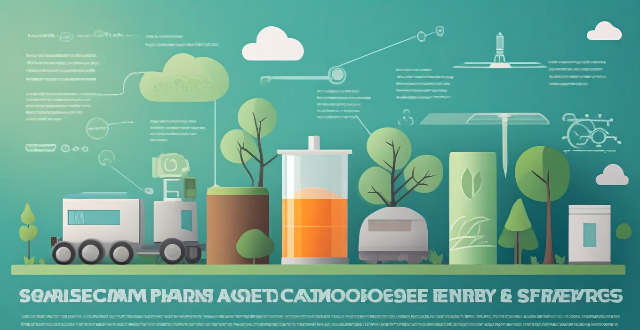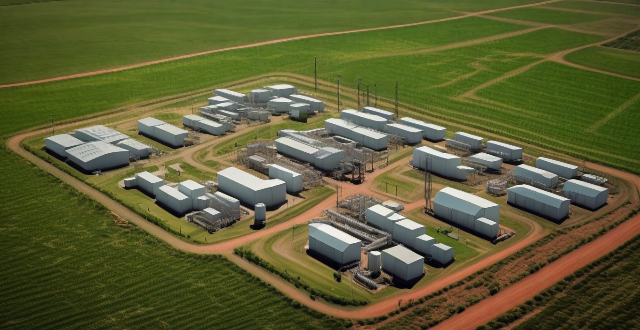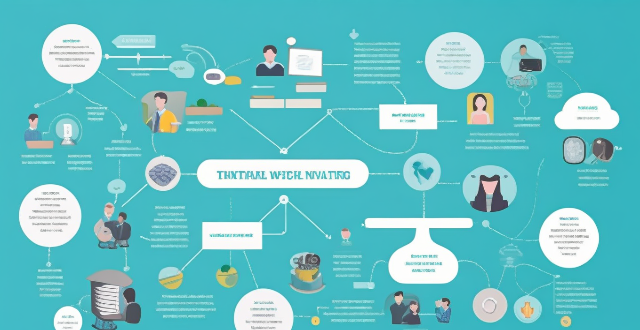Invest Alternative

How does private equity compare to other forms of alternative investments ?
Private equity is a type of investment where funds are invested directly in companies that are not publicly traded. It differs from other forms of alternative investments in terms of illiquidity, risk level, return potential, and accessibility. Private equity investments are typically illiquid, carry a high level of risk, have the potential for high returns, and are only available to accredited investors. Other forms of alternative investments, such as real estate, commodities, hedge funds, derivatives, venture capital, and angel investing, may offer more liquidity, diversification, hedging strategies, and accessibility to a wider range of investors. It is important for investors to carefully consider their investment goals, risk tolerance, and liquidity needs before investing in any type of alternative investment.

What is the best way to invest in gold ?
This article explores the best way to invest in gold, discussing why one might want to consider adding gold to their portfolio and outlining different ways to invest in gold, such as physical gold, gold stocks and mutual funds, gold ETFs, and gold futures and options. The advantages and disadvantages of each method are discussed, and it is emphasized that the best way to invest in gold depends on individual investment goals, risk tolerance, and personal preferences.

How much money should I invest in cryptocurrencies ?
Investing in cryptocurrencies has become a popular trend, but determining how much money to invest can be challenging. Factors such as risk tolerance, investment goals, market conditions, and the need for diversification should be considered before making any investment decisions. It is important to carefully consider these factors and only invest what you are comfortable losing, as investing in cryptocurrencies carries risks.

How do I invest my money wisely for long-term growth ?
Investing wisely for long-term growth involves setting financial goals, creating a diversified portfolio, considering risk tolerance, investing for the long-term, and monitoring investments regularly.

How can individuals invest in clean energy projects ?
Investing in clean energy projects is a way to support sustainable development and fight climate change. Individuals can invest through renewable energy mutual funds, green bonds, direct investment in clean energy companies, community solar projects, and sustainable real estate investments. Examples include iShares Global Clean Energy ETF (ICLN), Toyota Green Bond, and Eco-friendly apartment complexes.

How can I invest in stocks with a minimal risk ?
How to Invest in Stocks with Minimal Risk Investing in stocks can be risky, but there are strategies to minimize these risks. Diversification across stocks, sectors, and asset classes is crucial. Dollar-cost averaging helps smooth market fluctuations. Stop-loss orders limit potential losses. Long-term investing allows for market recoveries. Understanding the companies you invest in reduces unknown risks. Start small and learn as you go, staying informed about financial news. Working with a financial advisor can provide personalized guidance. Remember, no investment is completely risk-free, so assess your comfort level before making decisions.

What is the best cryptocurrency to invest in ?
The article provides a summary of the best cryptocurrencies to invest in, including Bitcoin (BTC), Ethereum (ETH), Binance Coin (BNB), and Cardano (ADA). It highlights the pros and cons of each cryptocurrency, such as high liquidity and widespread adoption for Bitcoin, smart contract functionality and a large developer community for Ethereum, usefulness on the Binance exchange and a burn mechanism for Binance Coin, and a strong academic foundation and focus on security and sustainability for Cardano. The conclusion emphasizes the importance of considering factors such as liquidity, adoption, and potential for growth when choosing a cryptocurrency to invest in, and encourages readers to do their own research before making an investment decision.

Is there a natural alternative to bleach that can be used for disinfecting surfaces ?
There are several natural alternatives to bleach that can be used for disinfecting surfaces, including vinegar, hydrogen peroxide, and tea tree oil. These alternatives are effective against bacteria, viruses, and fungi, and are also safer and eco-friendly compared to bleach. Vinegar is inexpensive and easy to find, but has a strong smell and may damage certain surfaces if left on for too long. Hydrogen peroxide is also inexpensive and easy to find, but can be harmful if ingested or inhaled in large quantities and may fade certain fabrics or surfaces if left on for too long. Tea tree oil is a natural antimicrobial agent that is safe for pets and children, but is expensive compared to other natural disinfectants and may cause skin irritation if not diluted properly. By using these natural disinfectants, you can keep your home clean and healthy without exposing yourself or your family to harsh chemicals.

How do I invest in the stock market ?
The text provides a step-by-step guide on how to invest in the stock market. It emphasizes the importance of education, determining investment goals, choosing a strategy, opening a brokerage account, selecting investments, monitoring them, and maintaining patience and discipline. The process involves learning about different types of stocks, understanding risks, diversification, and risk management. It also includes researching brokerage firms, funding an account, choosing individual stocks or mutual funds based on company performance, and staying informed about market changes. Overall, the text encourages potential investors to approach stock market investing with careful planning and research to achieve their financial goals over time.

Is it safe to invest in cryptocurrency as a financial product ?
Is it safe to invest in cryptocurrency as a financial product? The answer is not straightforward, as there are both risks and potential benefits associated with this type of investment. On the one hand, cryptocurrencies are known for their high volatility, lack of regulation, and security risks, which can make them a risky investment. On the other hand, investing in cryptocurrency can potentially yield high returns, offer decentralization, and be accessible to investors. Ultimately, it is important to carefully consider the risks involved before making any investment decisions and to only invest what you are willing to lose. As with any investment, it is recommended to do your own research and consult with a financial advisor before making any decisions regarding cryptocurrency investments.

Can I invest in financial products with a small amount of money ?
Investing in financial products with a small amount of money is possible and can be beneficial for long-term wealth growth. Minimum investment requirements vary among different financial products, but options like robo-advisors, micro-investing apps, online brokerages, ETFs, and direct stock purchases allow for low minimum investments. Starting small helps manage risk, build discipline, and take advantage of compound interest. Tips for investing small include setting clear goals, educating oneself, diversifying the portfolio, considering fees and taxes, and staying patient and disciplined.

Is it better to save or invest money for wealth growth purposes ?
The age-old debate of whether to save or invest money for wealth growth purposes largely depends on individual circumstances, risk tolerance, and financial goals. Saving offers security and stability but low returns, while investing carries more risk but has the potential for higher rewards. The best approach for most individuals is a balance between saving and investing, with strategies such as establishing an emergency fund, allocating for short-term goals, investing for long-term goals, and regularly re-evaluating financial plans.

What are some alternative sources of funding for startups besides venture capital ?
Startups have various funding options beyond venture capital, including angel investors, crowdfunding, friends and family, bank loans, government grants, strategic partnerships, and bootstrapping. Each method has its advantages and drawbacks, so startups should carefully consider their options based on their specific needs and goals.

How do I invest in tech stocks as a beginner ?
Investing in tech stocks can be a profitable venture, but it's important to approach it with caution and knowledge. Here are some steps to help you get started: 1. Educate yourself on the basics of the stock market and the technology sector. 2. Set investment goals based on your risk tolerance and desired returns. 3. Choose a reputable brokerage firm that offers access to the stock market. 4. Research individual tech stocks by looking at financial statements, earnings reports, and news articles. 5. Diversify your portfolio by investing in multiple tech stocks across different industries and companies. 6. Monitor your investments and stay informed about industry developments and company news. 7. Remember that investing in stocks involves risks, including the possibility of losing money. Do your own research and consult with a financial advisor before making any investment decisions.

What are the benefits of investing in private equity ?
Investing in private equity offers higher potential returns, diversification benefits, active management and control, access to unique opportunities, tax efficiency, and a disciplined approach to investing. However, it also comes with risks such as illiquidity, high entry barriers, and the need for specialized knowledge. Proper due diligence and consideration of one's overall investment objectives and risk tolerance are essential before committing capital to private equity.

How effective is solar power as an alternative energy source ?
Solar power is a sustainable and environmentally friendly energy source with decreasing costs and increasing efficiency due to technological advancements.

Are there any alternative methods for preventing infectious diseases besides vaccination ?
Besides vaccination, there are several alternative methods that can help prevent the spread of infectious diseases, including hand hygiene, wearing personal protective equipment (PPE), following respiratory etiquette, and maintaining safe food practices. These measures can reduce the risk of infection and contribute to controlling the spread of infectious diseases.

How does hydropower compare to other forms of alternative energy ?
Hydropower, a form of renewable energy that uses water flow or fall to generate electricity, is compared with other alternative energies like solar, wind, geothermal, and biomass across various aspects: 1. **Cost-Effectiveness**: Hydropower has high setup costs but low operational expenses, while solar and wind require significant upfront investment for installation but have lower running costs. Geothermal can be expensive initially due to drilling and exploration, and biomass costs vary based on the type and conversion technology used. 2. **Reliability and Consistency**: Hydropower offers consistent power generation as long as water flow is maintained. Solar power's reliability depends on sunlight, wind power on wind patterns, geothermal power provides consistent power once established, and biomass needs a steady supply of material for consistency. 3. **Environmental Impact**: Hydropower can impact habitats and water temperature but produces no direct emissions. Solar power has a relatively low environmental impact during operation but considers the manufacturing process. Wind power is generally environmentally friendly, geothermal power releases fewer pollutants than fossil fuels, and biomass burning releases CO2 but is carbon-neutral. 4. **Energy Storage and Grid Integration**: Hydropower offers excellent energy storage capabilities. Solar and wind powers require energy storage solutions. Geothermal power doesn't typically require energy storage, while biomass can be stored and used as needed. 5. **Scalability and Deployment Speed**: Large-scale hydropower projects can take many years to build, whereas small-scale or run-of-river systems can be deployed faster. Solar power can scale from small residential systems to large farms, and wind farms can be built relatively quickly. Geothermal power's scalability depends on the resource available, and deployment can be slow due to requirements. Biomass ranges from small community digesters to larger power plants, with scalability being moderate.

What role can nuclear power play in providing alternative energy solutions ?
Nuclear power is a low-carbon energy source that can contribute significantly to providing alternative energy solutions. It offers several advantages, such as low carbon emissions, high energy density, diverse fuel sources, waste management capabilities, economic benefits, job creation, and energy security. With its potential to reduce carbon emissions and mitigate climate change, nuclear power can play a crucial role in meeting our energy needs while also contributing to environmental sustainability.

Are there alternative strategies to economic stimulus plans that can achieve similar goals ?
Economic stimulus plans are often used by governments to boost economic growth and create jobs. However, there are alternative strategies that can achieve similar goals without relying solely on government intervention. In this article, we will explore some of these alternative strategies. Deregulation is the process of removing or reducing government regulations in a particular industry or sector. By reducing barriers to entry and allowing greater competition, deregulation can lead to increased innovation, lower prices, and more efficient allocation of resources. This can ultimately stimulate economic growth and job creation. Tax cuts can be an effective way to stimulate economic growth by putting more money into the hands of consumers and businesses. By reducing taxes, individuals and businesses have more disposable income to spend on goods and services, which can increase demand and lead to job creation. Investing in infrastructure such as roads, bridges, and public transportation can create jobs while also improving the overall quality of life for citizens. By improving transportation networks and other public services, governments can make it easier for businesses to operate and attract new investments. Investing in education and training programs can help prepare workers for the changing demands of the labor market. By providing skills training and education opportunities, governments can help workers adapt to new technologies and industries, making them more competitive in the global economy.

How does real estate investing compare to other methods of wealth growth ?
This text compares real estate investing with other wealth growth methods. It outlines the advantages and disadvantages of real estate investing, such as appreciation, cash flow, tax benefits, leverage, and diversification, but also mentions liquidity issues, management responsibilities, market risks, high upfront costs, and the risk of tenant damage. The text then explores alternative wealth growth methods, including stock market investing, bond investing, cryptocurrency investing, art and antiques investing, and gold and precious metals investing. It highlights the pros and cons of each method, such as liquidity, diversification, stability, fixed income, high risk/high reward, technology exposure, aesthetic value, scarcity, subjectivity, storage and maintenance, hedge against inflation, physical asset, limited upside, storage and insurance costs, and no cash flow. Finally, the text emphasizes the importance of understanding the risks and rewards associated with each option and choosing the one that aligns with your financial goals and risk tolerance.

What is the potential of algae-based biofuels in providing a renewable energy alternative ?
Algae-based biofuels offer a renewable energy alternative with high productivity, low environmental impact, and potential to reduce greenhouse gas emissions. They can be grown on non-arable land, require no herbicides or pesticides, and absorb CO2 during photosynthesis. Technological advancements in genetically modified strains and cultivation techniques are improving growth rates and oil yields. However, challenges related to scalability, economic viability, and supply chain reliability must be addressed for widespread adoption as a sustainable energy solution.

What are the alternatives to fossil fuels for energy production ?
The article discusses various alternatives to fossil fuels for energy production, including solar energy, wind energy, hydroelectric power, geothermal energy, biomass energy, and nuclear energy. It explains the working principles of each alternative and their advantages and disadvantages. The main advantage of these alternatives is that they produce clean energy with minimal greenhouse gas emissions, reducing the impact on the environment and climate change. However, some of them require significant investment and infrastructure development, while others have safety concerns or limited availability. Overall, the article highlights the potential of these alternatives in providing sustainable and reliable sources of energy for the future.

Is it safe to invest in cryptocurrencies ?
The text discusses the risks and benefits of investing in cryptocurrencies, including volatility, lack of regulation, security risks, high returns, decentralization, and anonymity. Tips for safe investment include doing research, diversifying investments, using reputable exchanges and wallets, and being wary of scams.

What factors should I consider before investing in gold ?
When considering investing in gold, it's importantWhen considering investing in gold, it's important define your investment goals, explore These factors will help you make an informed decision about whether gold is a suitable addition to your portfolio.

How do I invest in real estate without buying property ?
Real estate investment offers wealth growth opportunities without buying physical property through options like REITs, crowdfunding, syndication, online platforms, and mutual funds/ETFs. These methods provide liquidity, diversification, and passive income potential while avoiding typical challenges of direct property ownership.

What are some innovative ways that people are using to generate their own alternative energy at home ?
The provided text discusses innovative ways to generate alternative energy at home. It mentions various methods such as solar power (solar panels, solar water heaters, solar chargers), wind power (home wind turbines, vertical axis wind turbines), hydropower (micro hydro systems, rainwater harvesting), geothermal energy (ground source heat pumps, geothermal water heaters), and biomass energy (wood burning stoves, biogas digesters). The conclusion highlights the potential of these methods in reducing a household's carbon footprint and contributing to a sustainable future.

Is it a good time to invest in gold ?
Investing in gold is a popular choice for many investors, but whether it is a good time to invest depends on various factors such as market conditions, economic indicators, and personal financial goals. Market conditions are influenced by supply and demand, geopolitical events, and monetary policies. Economic indicators like inflation rates, interest rates, and economic growth can also impact the appeal of gold as an investment. Personal financial goals should also be considered, including diversification, long-term investment, and risk tolerance. It is important to assess individual circumstances and risk tolerance before making any investment decisions, and consulting with a financial advisor can provide valuable guidance tailored to specific needs and objectives.

What are the most promising alternative energy sources for the future ?
The world is in urgent need of sustainable and renewable energy sources as it grapples with climate change and the depletion of fossil fuels. Some of the most promising alternative energy sources for the future include solar energy, wind energy, hydropower, geothermal energy, biomass energy, and tidal energy. Solar energy is abundant and renewable, with no greenhouse gas emissions during operation. It can be installed on rooftops or in large solar farms, and technological advancements have made it more efficient and affordable. However, it faces challenges such as intermittent power generation, high initial installation costs, land use concerns, and efficiency drops in colder climates. Wind energy is also renewable and abundant, with no greenhouse gas emissions during operation. It can be installed on land or offshore, and technological advancements have made it more efficient and affordable. However, it faces challenges such as intermittent power generation, noise pollution from turbines, impact on wildlife, and visual impact on landscapes. Hydropower is a reliable and renewable source of energy that can provide baseload power to the grid. It can also be combined with other renewable sources for energy storage. However, it faces challenges such as environmental impact on aquatic ecosystems, limited potential for expansion due to suitable sites being scarce, seasonal variability in water flow affecting power generation, and large upfront capital costs for construction. Geothermal energy is a reliable and renewable source of energy that can provide baseload power to the grid. It can also be used for heating and cooling purposes as well as electricity generation. However, it faces challenges such as limited to specific geographic locations with geothermal resources, environmental impacts such as water usage and land subsidence, high initial installation costs, and potential for induced seismicity in certain areas. Biomass energy is a renewable and abundant source of energy that can be used for both electricity generation and heat production. It can help reduce waste by utilizing organic materials that would otherwise be discarded and can provide jobs in rural areas through the collection and processing of biomass materials. However, it faces challenges such as emissions of greenhouse gases and air pollutants during combustion, competition with food crops for arable land and water resources, high transportation costs for biomass materials over long distances, and concerns about sustainability and carbon neutrality of some biomass sources. Tidal energy is a predictable and reliable source of energy due to the regularity of tides. It can provide baseload power to the grid when combined with other renewable sources like wind or solar energy and has minimal visual impact compared to other renewable sources like wind turbines or solar panels. However, it faces challenges such as limited to coastal areas with significant tidal ranges or fast-moving tidal currents, high initial installation costs for tidal turbines or barrages, potential environmental impacts on marine ecosystems and navigation routes, and technological challenges in designing equipment capable of withstanding harsh ocean conditions over time.

How do hydrogen fuel cells work and are they a practical alternative energy source ?
Hydrogen fuel cells are devices that convert the chemical energy of hydrogen into electricity. They consist of an anode, cathode, electrolyte, and external circuit. The process involves splitting hydrogen into protons and electrons at the anode, moving protons through the electrolyte, moving electrons through the external circuit, combining protons and electrons with oxygen at the cathode to form water, and producing heat. Hydrogen fuel cells are renewable, have high energy density, zero emissions, and versatile applications. However, they face challenges such as high cost, limited infrastructure, and safety concerns.